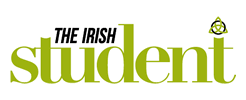Museum and art gallery curators manage collections of objects of artistic, scientific and historic interest, bringing them to life in a way that’s educational and appealing.
They:
- research and develop collections
- share items with other collections
- interpret collections for a range of visitors
- plan and create displays and exhibitions.
Curators may also be involved in marketing, fundraising, answering visitor questions, giving presentations or in management roles.
They usually work a set number of hours a week, which may include regular and evening and weekend work. Part-time, short-term contracts and seasonal work are often available.
New entrants may start on around €25,000 a year. Senior curators may earn up to €56,000.
Curators should have:
- creative flair
- knowledge of conservation and preservation techniques
- good communication and organisational skills
- ability to take initiative
- an interest in history, art or the sciences and often a specialist area, such as archaeology or art history.
Museums and art galleries in Ireland cover a wide range of subjects and are found in most cities in Ireland. Employers include national museums and galleries, regional museums and galleries, university museums and independent specialist museums and galleries.
Freelance and consultancy and short-term contract work is becoming more common.
Most curators have a degree and, increasingly, a postgraduate certificate, diploma or Masters degree often in related subjects such as arts and cultural or heritage management, history of art, museum and heritage studies or archaeology.
What is the work like?
Museum and art gallery curators manage collections of objects of artistic, scientific and historic interest. Increasingly, curators play an important role in interpreting and bringing these collections to life in a way that’s both educational and appealing to a range of visitors. In some museums, curators may be called keepers.
Curators in contemporary art galleries or other arts venues may only be responsible for objects in temporary exhibitions.
Typical duties may involve:
- researching and understanding collections, including their social or historical context
- developing collections by acquiring items and by borrowing and sharing items from other collections
- planning and creating the displays and exhibitions, often using multimedia techniques
- interpreting collections for a range of visitors
- carefully cataloguing items being displayed or archived and maintaining records, usually on a computer
- ensuring exhibits are stored in the right conditions.
In large museums, curators will often have responsibility for a specialist collection. In smaller, independent museums they may be in charge of the museum. University museum curators are also expected to contribute to student teaching and academic research programmes.
Other work may include:
- organising marketing, publicity and fundraising events
- co-ordinating other staff within the museum
- liaising with schools and other groups and giving tours and educational presentations
- answering specific questions from visitors about a collection.
The curator may also have a management role, making sure that everything runs smoothly and looking after staff issues, security, risk assessment and insurance, as well as influencing museum policies. Curators may also oversee the restoration of certain artefacts.
Hours and environment
Curators usually work a set number of hours a week, sometimes on a rota. Regular evening and weekend work is common, as curators may need to be available during extended opening hours or to set up special exhibitions when the museum/gallery is closed to the public. Part-time, short-term contracts and seasonal work are often available.
Useful Links:
Irish Museums Association
National Museum of Ireland
